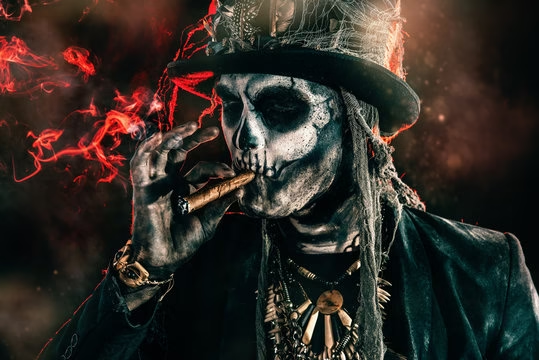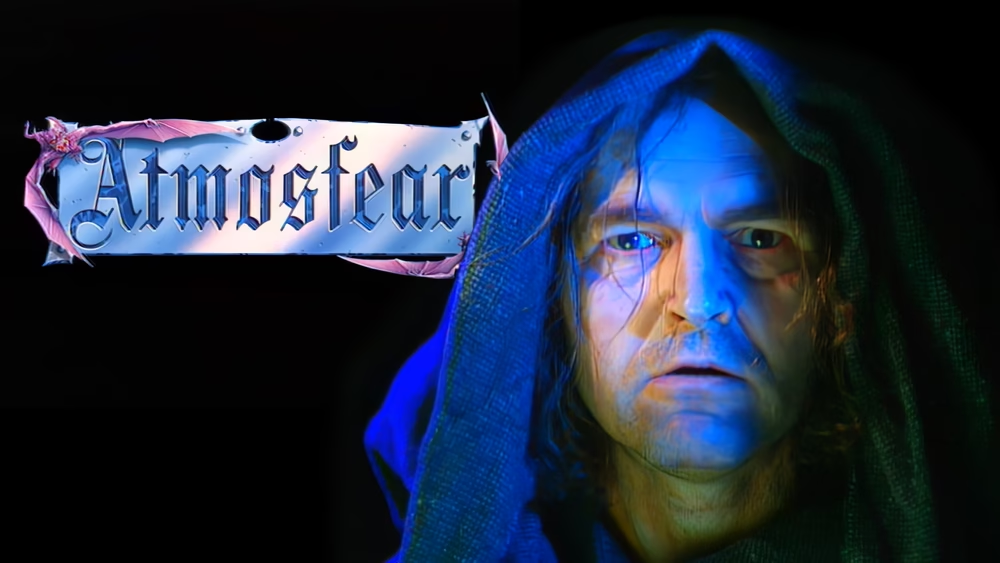The Man at the Cemetery Gate
The wind hissed through crooked iron gates as lightning flickered across a Haitian graveyard. A tall figure leaned on a cane beneath a battered top hat. His tailcoat flapped like a funeral banner, and smoke curled from the cigar clenched in his teeth. One lens of his dark glasses was gone, revealing an eye that seemed to peer straight into both the world of the living and the realm of the dead. The villagers knew better than to stare. They whispered his name, Baron Samedi, the Baron of Saturday, lord of the crossroads where life and death shake hands.
Some say he lingers at the gates not only to watch over the dead but to keep the living in their place. No soul is lowered into the soil until he agrees to dig the grave. The old stories warn: cross him and a simple cold will turn deadly. Yet earn his favour and the deadliest of fevers will be gone by morning.

A Trickster and a Healer
Baron Samedi is no silent specter. He is loud, bawdy, and loves a good joke—often one too crude to repeat. He drinks peppered rum, smokes cigars, and flirts shamelessly, even with mortal women, though his fierce wife Maman Brigitte keeps a watchful eye. The Haitian dictator François “Papa Doc” Duvalier once mimicked Samedi’s nasal voice and style, using the loa’s terrifying charisma to bend a nation’s will. Yet for all his outrageousness, the Baron is a healer. Many Vodou practitioners call on him to save the sick, knowing that death answers only to him.
A Celebration of Life in Death
Each year, as November shadows deepen, cemeteries across Haiti burst with life. Drums pound, candles flare, and laughter echoes among the tombstones. It is Fèt Gede, the Festival of the Dead, when families invite Baron Samedi and the Gede spirits to share food, drink, and dance. Offerings of cigars, black coffee, coins, and fiery rum are left on graves, while vevé (ritual drawings of crosses and coffins) mark the earth. The Baron arrives not as a grim reaper but as a guest who proves that even in death, joy endures.
From Graveyards to Living Rooms
Baron Samedi’s mischief has escaped the graveyard gates before. In the 1990s VHS board game Atmosfear (also known as Nightmare), he became one of the unforgettable playable characters along with other such as Elizabeth Bathory and Gévaudan. His skeletal charm and gallows humor introduced a generation of players to his name, even if the game’s version was a shadow of the complex loa revered in Vodou.

A Whispered Encounter
An old story tells of a Port-au-Prince family who once left a cigar and rum at the cemetery’s oldest grave. Storm clouds gathered, and lightning split the sky. For a heartbeat, a top hat gleamed beside the Kwa Bawon cross. By morning, their feverish child was well, the offering was gone, and the dogs refused to howl. They say the Baron had passed through, laughing softly as he walked between worlds.
Why He Endures
To outsiders, Baron Samedi may seem like a villain or a party-loving ghost. But in Haitian Vodou, he is protector, guide, and reminder. Death is not an end but a passage; laughter belongs even in the graveyard. His image, tailcoat, top hat, dark glasses, remains on altars, in festivals, and even in popular culture because he embodies the truth that the boundary between life and death is as thin as a flicker of candlelight.



